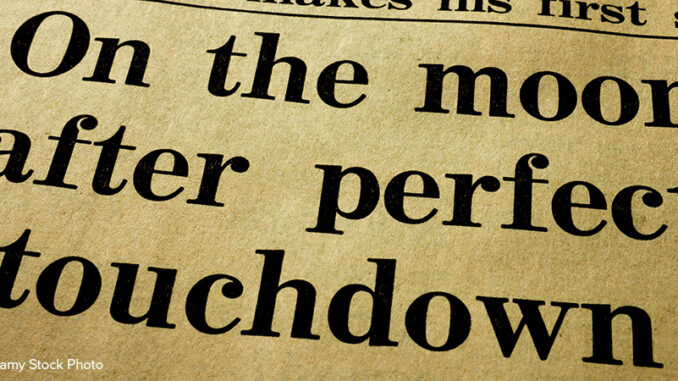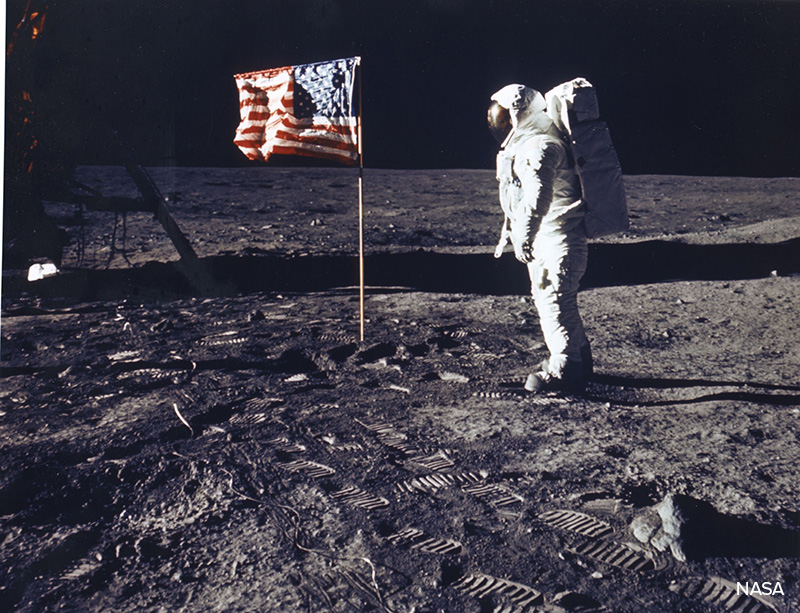
Fifty years ago this week, three American astronauts traveled 238,000 miles to become the first people to walk on the moon. On July 20, 1969, American Neil Armstrong first set foot on the moon’s surface and uttered the now-famous words, “That’s one small step for man, one giant leap for mankind.” So how is the United States, and specifically NASA, choosing to celebrate the big day? Here, btw takes a look.
A Celebration to Remember
Fifty years ago, at 8:32 am on July 16, 1969, Apollo 11 launched from the U.S. Space and Rocket Center, headed for the moon. To commemorate this special anniversary, the U.S. Space and Rocket Center launched 5,000 rockets from the same spot at 8:32 am on July 16, 2019. The goal, aside from a celebration, was to set a Guinness World Record for the most rockets launched at one time.

Meanwhile, Washington, D.C. is commemorating the event in its own unique way. Fifty years ago, the three astronauts traveled to the moon on a Saturn V rocket. There are only three of this type of rocket still around today. This week, the east face of the Washington Monument will be lit up with a 363-foot image of a Saturn V. Later, a 17-minute documentary will be added, as well as a simulated countdown to liftoff on a re-creation of the Kennedy Space Center clock. The project, called “Apollo 50: Go for the Moon,” was commissioned by the Smithsonian’s National Air and Space Museum.
Related Links
- Learn more about the commemoration that the Smithsonian Air and Space Museum is planning for the 50th anniversary of the Apollo mission by visiting the Institute’s Web site.
- The NASA Web site is also providing a great deal of information about the history of this moment. You can review much of its Apollo 11 coverage by exploring the NASA Web site.
For its part, NASA has a whole list of activities planned during the month of July, including special television programming, talks, and exhibits. And while Neil Armstrong passed away in 2012, 89 year-old former astronaut Buzz Aldrin–the second man on the moon–traveled to the Explorer’s Club in New York City in March to join other Apollo astronauts in an anniversary celebration. (Aldrin drew a lot of attention for wearing a suit covered in rocket ships.)
So What’s Next?
It’s hard to imagine an event that would generate more excitement than a second moon landing–unless, of course, it’s a spaceflight to Mars. NASA scientists plan to send a crewed spaceship to Mars in the 2030s, after much debate between the president and Congress about how much money to allot to NASA to gear up for a Mars landing. The current plan is for NASA to launch a program called Artemis, which will use a second moon landing as a stepping stone to putting humans on Mars. This second moon landing is scheduled for 2024, when NASA plans to send two astronauts–this time, a man and a woman–to walk on the moon.
Though many scientists and other experts have expressed doubts that NASA will have either the time or the money to achieve this ambitious goal, NASA insists that the timetable is doable and that they may be able to pull off a second moon landing for well under the projected budget of $20 million. Americans remain deeply divided over whether or not they want to see the federal government spend this much money on space exploration and defense.
